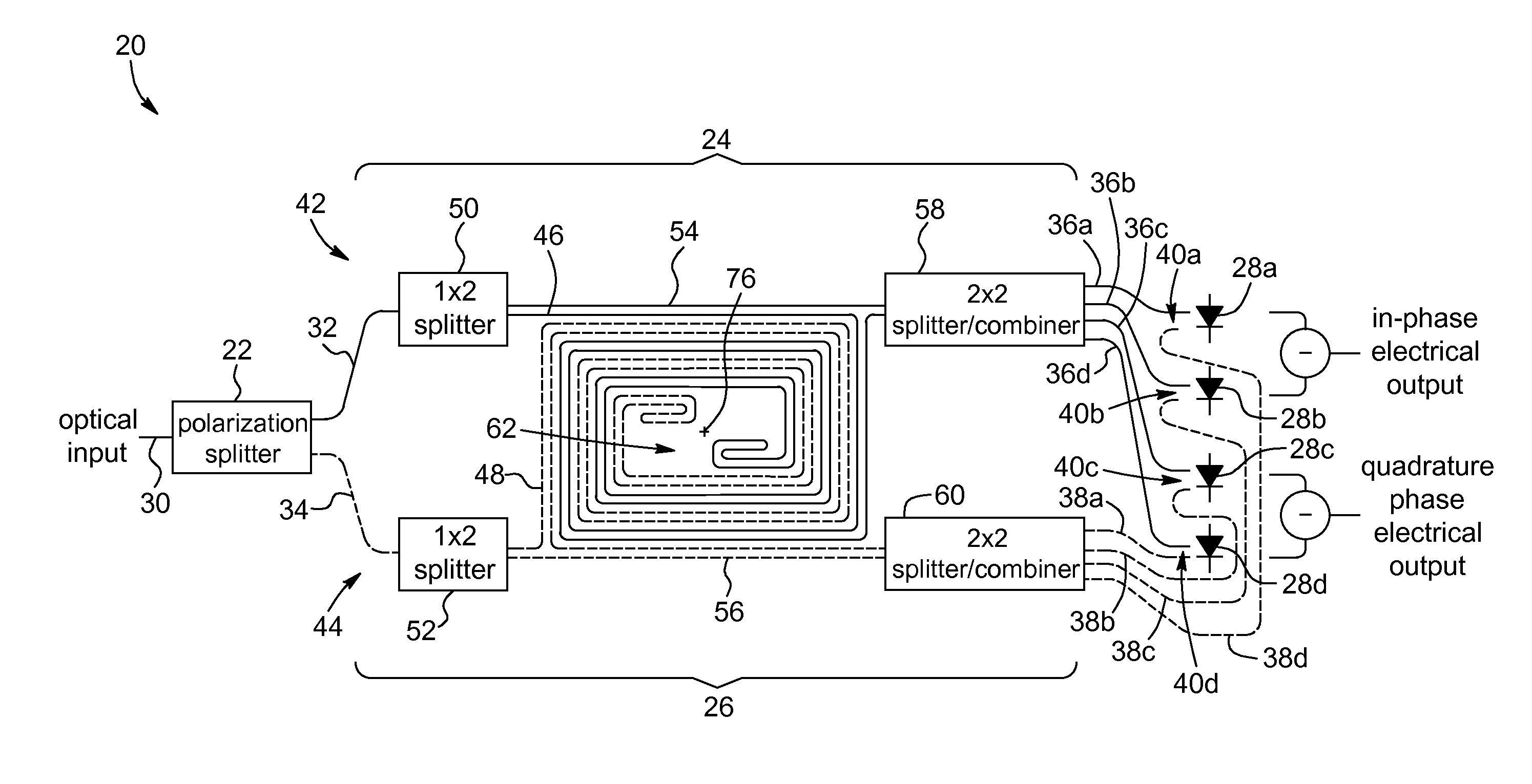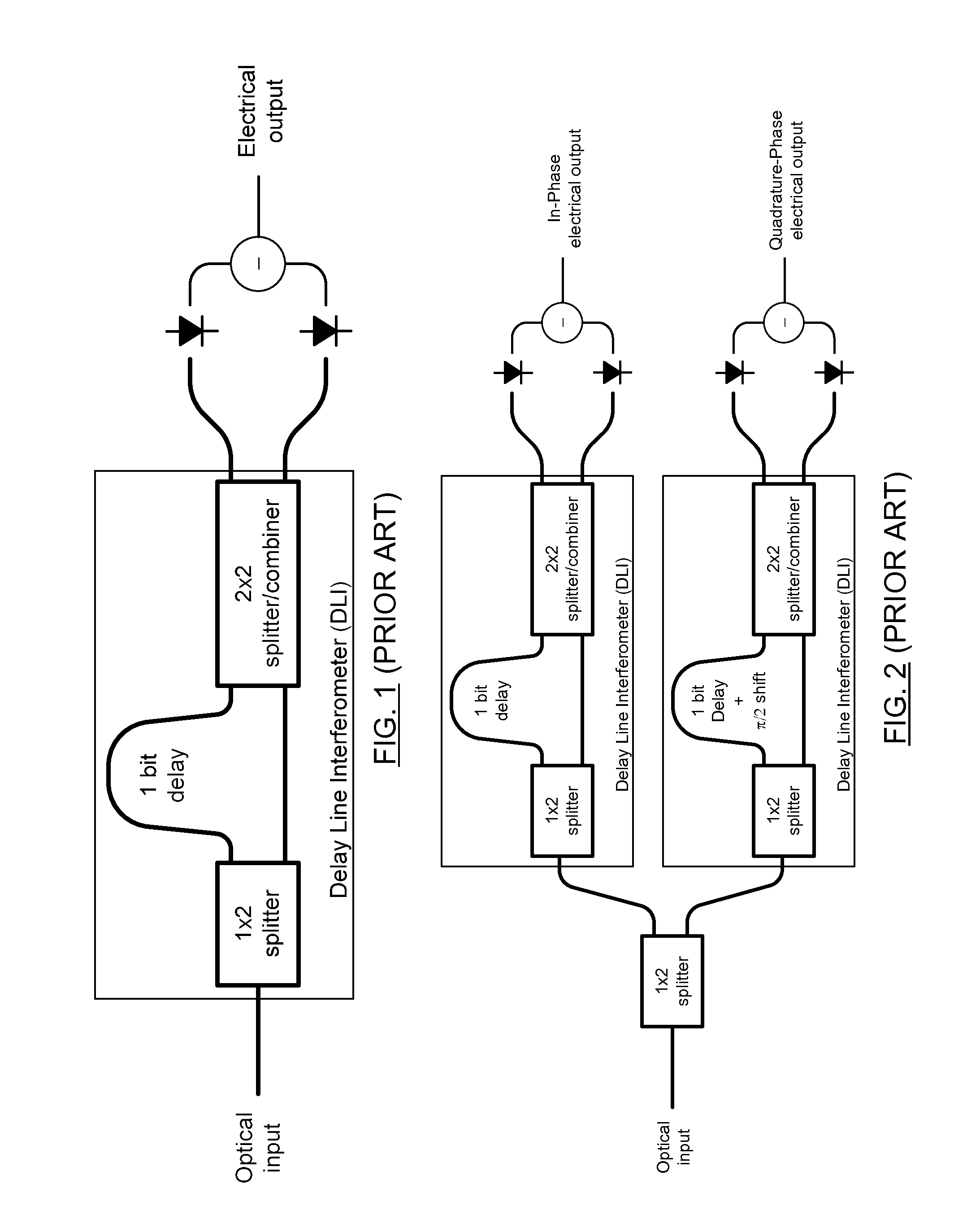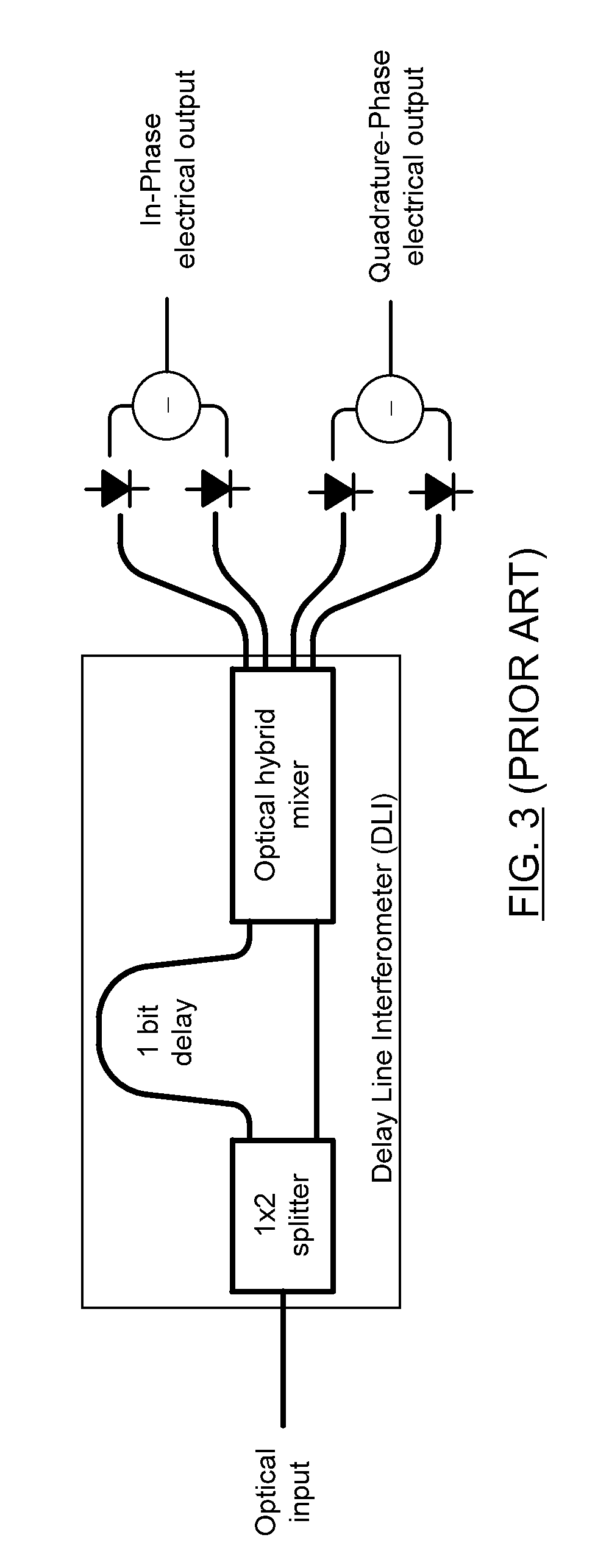Compact polarization-insensitive optical receiver
a polarization-insensitive, optical receiver technology, applied in the direction of optical elements, instruments, optical waveguide light guides, etc., can solve the problems of complex polarization multiplexing at the transmitter and receiver sides, complicated realization of polarization-insensitive devices, and limited commercial interest, so as to mitigate undetectable discrepancies
- Summary
- Abstract
- Description
- Claims
- Application Information
AI Technical Summary
Benefits of technology
Problems solved by technology
Method used
Image
Examples
Embodiment Construction
[0042]In the following description, similar features in the drawings have been given similar reference numerals, and, in order to not unduly encumber the figures, some elements may not be indicated on some figures if they were already identified in preceding figures. It should also be understood herein that the elements of the drawings are not necessarily depicted to scale, since emphasis is placed upon clearly illustrating the elements and structures of the present embodiments.
Polarization-Insensitive Optical Receiver
[0043]In accordance with an aspect of the invention, there is provided a polarization-insensitive optical receiver for demodulating a phase-modulated input optical signal.
[0044]Throughout the present description, the expression “polarization-insensitive”, when used to characterize the optical receiver according to embodiments of the invention, is understood to refer to an optical receiver capable of demodulating the phase-modulated input optical signal independently of...
PUM
 Login to View More
Login to View More Abstract
Description
Claims
Application Information
 Login to View More
Login to View More - R&D
- Intellectual Property
- Life Sciences
- Materials
- Tech Scout
- Unparalleled Data Quality
- Higher Quality Content
- 60% Fewer Hallucinations
Browse by: Latest US Patents, China's latest patents, Technical Efficacy Thesaurus, Application Domain, Technology Topic, Popular Technical Reports.
© 2025 PatSnap. All rights reserved.Legal|Privacy policy|Modern Slavery Act Transparency Statement|Sitemap|About US| Contact US: help@patsnap.com



